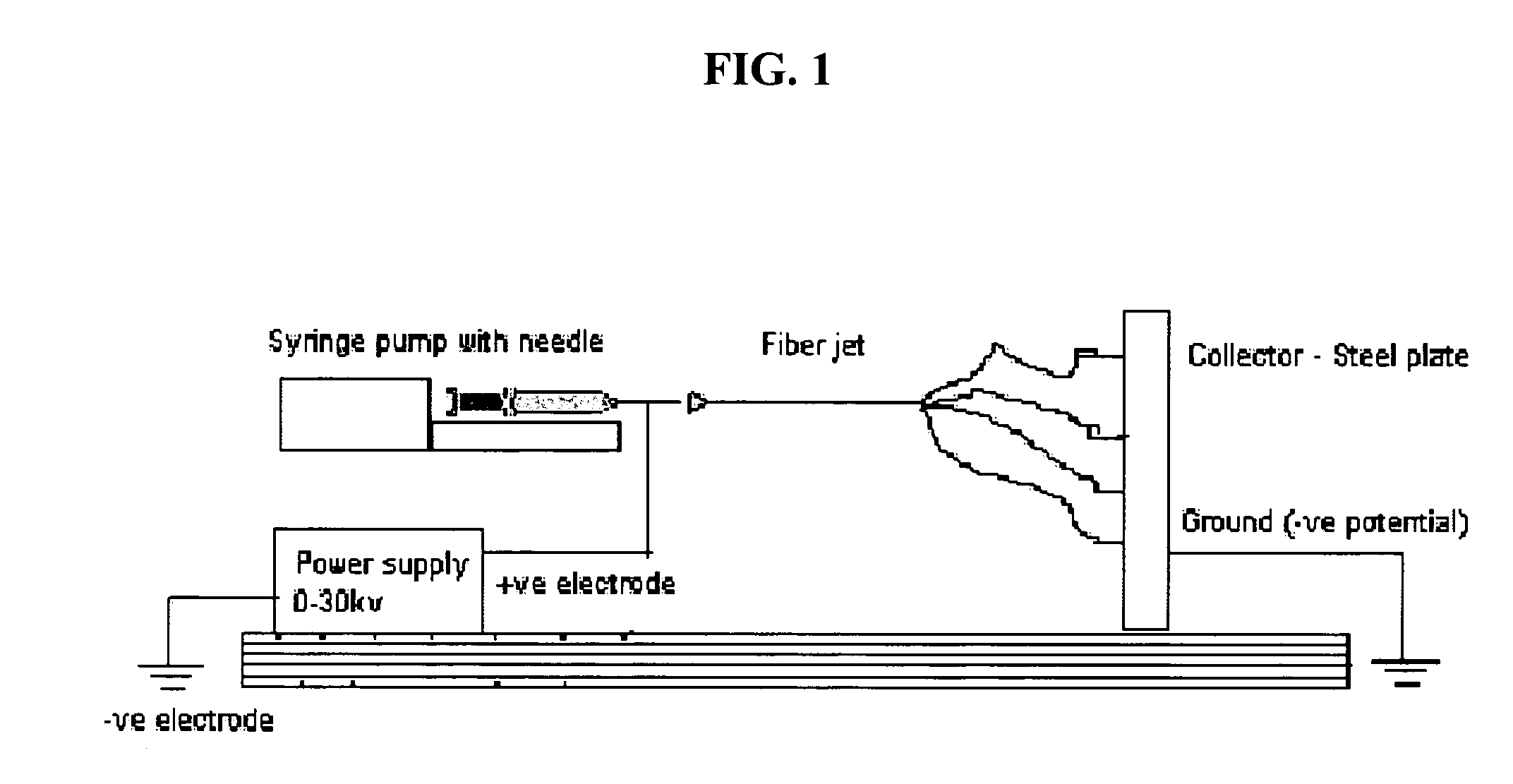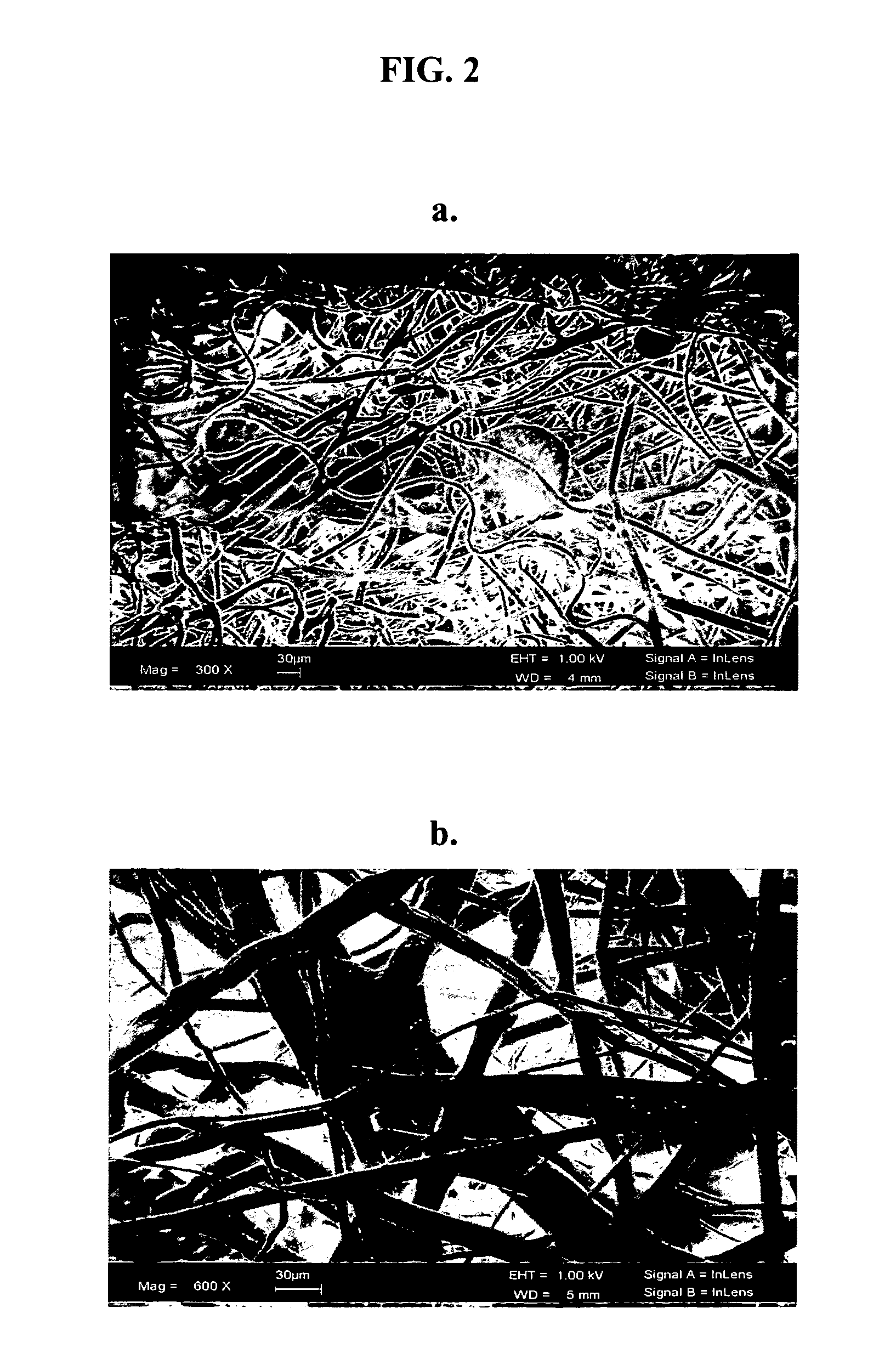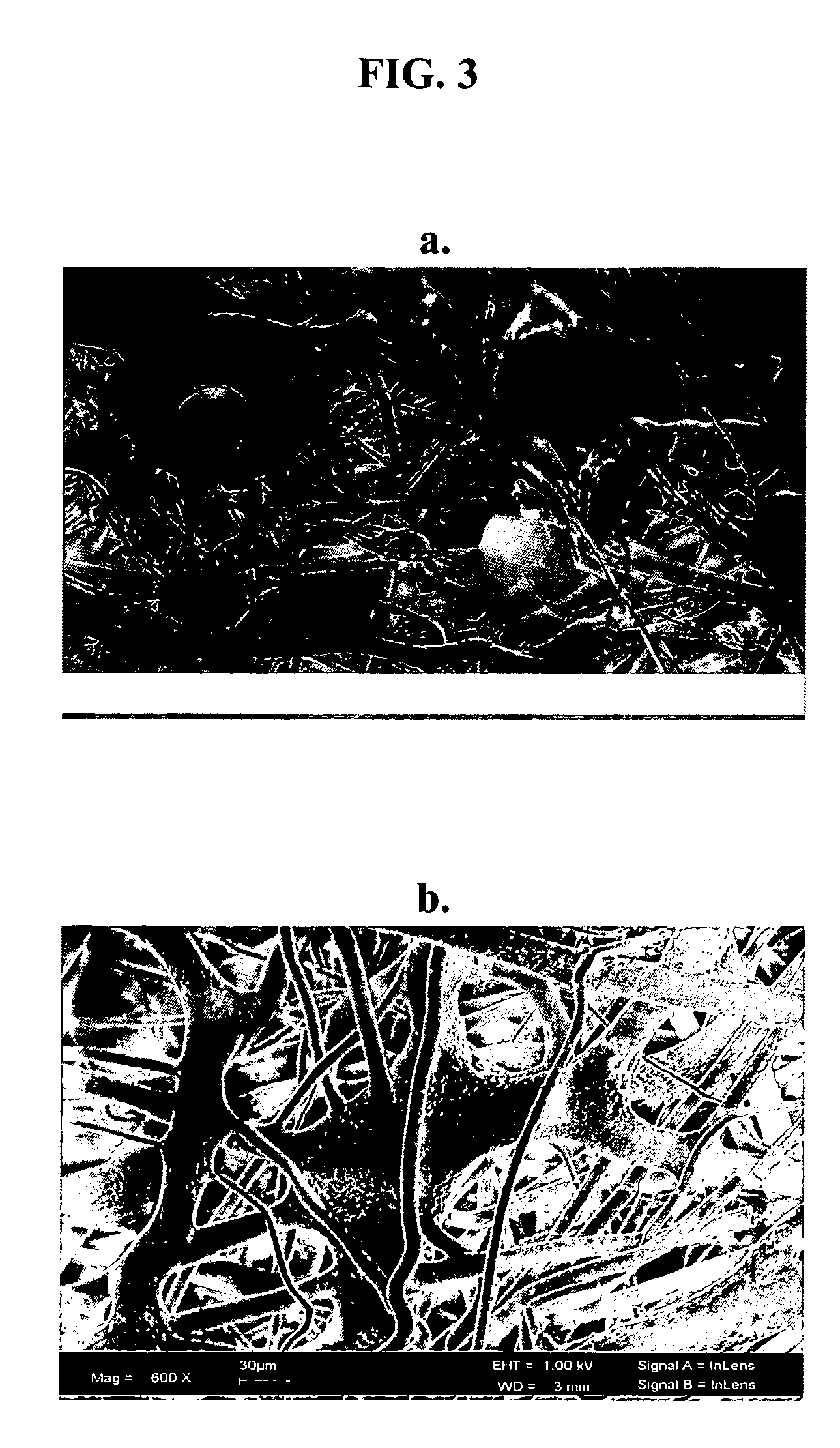Substrate recognition by differentiable human mesenchymal stem cells
a mesenchymal stem cell and subset technology, applied in the field of three-dimensional nanofiber matrix, can solve the problems of poor quality reparative tissue, hyaline cartilage formation, and failure to restore a normal articular surface, and achieve the effect of tissue engineering therapy
- Summary
- Abstract
- Description
- Claims
- Application Information
AI Technical Summary
Benefits of technology
Problems solved by technology
Method used
Image
Examples
example 1
Substrate Recognition by Differentiable Human MSC Cells
[0035] We have evaluated two commonly used polymeric compositions in the field of tissue engineering, namely poly-L-lactic acid (PLLA) and poly-D,L-lactide glycolide (PLGA) at the nano- and microscale fiber diameter range for their ability to support mesenchymal stem cell attachment. We then compared the morphology and growth characteristics of the attached cells on these substrates.
[0036] The term “nanoscale fiber” generally refers to fibers whose diameter ranges from about 1 to about 1000 nanometers. Nanoscale fibers whose average diameter ranges from about 400 to about 500 nanometers are most preferred. The term “microscale fiber” generally refers to fibers whose diameter ranges from about 1 to about 1000 micrometers. Microscale fibers whose diameter ranges from about 1 to about 100 micrometers are preferred, and microscale fibers whose diameter averages from about 10 micrometers to about 20 micrometers are most preferred. ...
example 2
Cell Proliferation
[0061] Human MSCs were isolated from adult, human whole bone marrow according to standard techniques and were seeded onto polymer scaffolds having the composition of PLLA or PLGA, each having fiber diameters on the micron scale (LF) or nano scale (SF) and grown in standard growth medium (DMEM, 10% fetal bovine serum, 1% antibiotic / antimycotic) for 14 days. Cell proliferation was assessed using Vybrant's MTT Cell Proliferation Assay Kit (Molecular Probes, Inc.).
[0062] The growth curves for cells seeded onto PLLA micron scale fibers (PLLA-LF), PLLA nano-scale fibers (PLLA-SF), PLGA micron scale fibers (PLGA-LF) and PLGA nano-scale fibers (PLGASF) are shown in FIG. 4. Cells grown on PLLA and PLGA micron scale and nanoscale fibers showed good comparable growth characteristics as measured by the MTT assay. No significant differences in human MSC proliferation were detected between PLLA and PLGA micron and nanoscale fibers.
example 3
PLLA / PLGA Micron and Nano Fiber Diameter Scaffolds Support Osteogenic Differentiation
[0063] Scaffolds were created by the process of electrospinning, and human mesenchymal stem cells were grown on the scaffolds to determine whether PLLA / PLGA micron and nano-sized scaffolds support osteogenic differentiation.
[0064] Materials and Methods
[0065] hMSCs were grown in control medium (DMEM, 10% FBS, 1% antibiotic) or osteogenic inducing medium (OS) (Control medium with 100 nM dexamethasone, 10 mM b-glycerophosphate, 0.05 mM L-ascorbic acid-2-phosphate) on PLLA or PLGA scaffolds having micron or nano sized fiber diameters.
[0066] The four scaffolds, PLLA microfiber (“PLF”) scaffolds, PLLA nanofiber scaffolds (“PSF”), PLGA microfiber scaffolds (“GLF”), and PLGA nanofiber scaffolds (“GSF”), were created by electrospinning.
[0067] On the day of cell seeding, scaffolds were soaked first in 100% ethanol for 20 minutes, then three times in PBS, 20 minutes each, for sterilization. Scaffolds then...
PUM
| Property | Measurement | Unit |
|---|---|---|
| size | aaaaa | aaaaa |
| size | aaaaa | aaaaa |
| diameter | aaaaa | aaaaa |
Abstract
Description
Claims
Application Information
 Login to View More
Login to View More - R&D
- Intellectual Property
- Life Sciences
- Materials
- Tech Scout
- Unparalleled Data Quality
- Higher Quality Content
- 60% Fewer Hallucinations
Browse by: Latest US Patents, China's latest patents, Technical Efficacy Thesaurus, Application Domain, Technology Topic, Popular Technical Reports.
© 2025 PatSnap. All rights reserved.Legal|Privacy policy|Modern Slavery Act Transparency Statement|Sitemap|About US| Contact US: help@patsnap.com



